Bala, Merionethshire
Up to 1834
A parliamentary report of 1777 recorded a parish workhouse in operation at Llandderfel with accommodation for up to eight inmates.
After 1834
Bala Poor Law Union was formed on 10th January, 1837. Its operation was overseen by an elected Board of Guardians, 12 in number, representing its 5 constituent parishes as listed below (figures in brackets indicate numbers of Guardians if more than one):
County of Merioneth: Llandderfel (2), Llanfawr (3), Llangower, Llannwchyllyn (2), Llanycil (4).
The population falling within the Union at the 1831 census had been 6,654 with parishes ranging in size from Llangower (population 412) to Llanycil (2,359). The average annual poor-rate expenditure for the period 1834-36 had been £2,891 or 8s.8d. per head.
Bala's first Union workhouse was built in 1839-41 at the south side of Bala High Street. In 1838, the Poor Law Commissioners authorised the expenditure of £1,970 on construction of the building which was to accommodate 80 inmates. A further £900 was authorised in 1841. The workhouse location and layout (highlighted in pink) are shown on the 1899 map below:
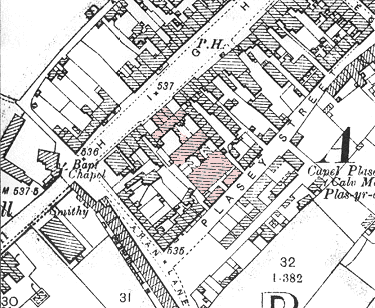
Bala High STreet workhouse site, 1899.
It had a T-shaped entrance block facing onto the High Street. To the rear was a two-storey octagonal hub with accommodation wings to each side. A large rectangular block stood towards the rear of the site.
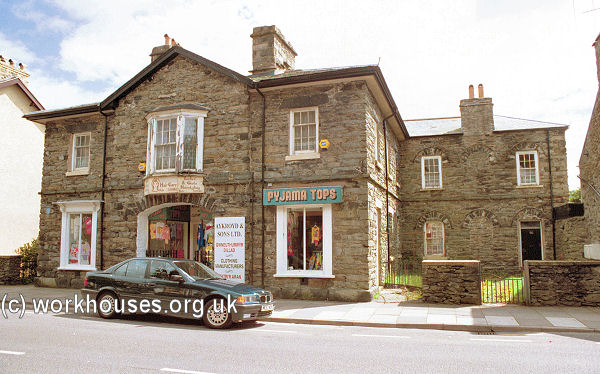
Bala workhouse entrance block from the north-west, 2000.
© Peter Higginbotham.
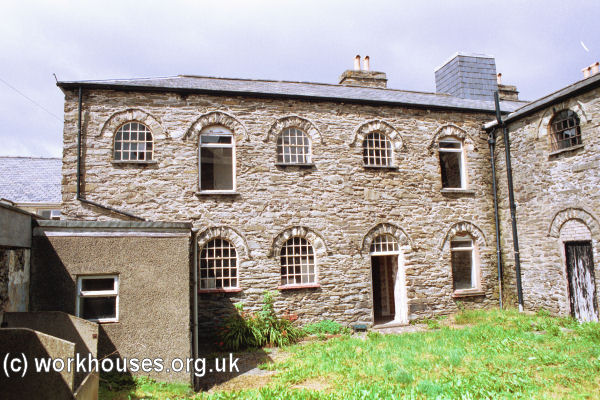
Bala workhouse rear f entrance block wing, 2000.
© Peter Higginbotham.
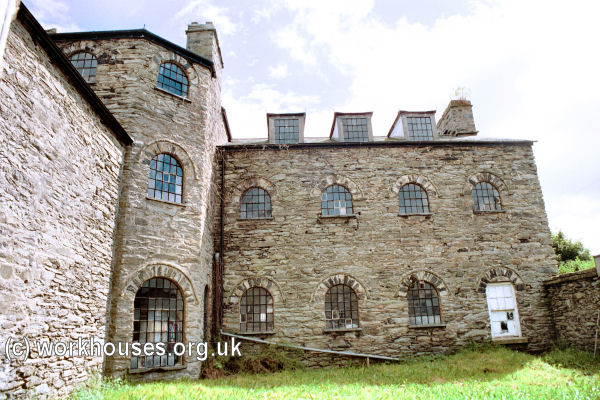
Bala workhouse hub and west wing, 2000.
© Peter Higginbotham.
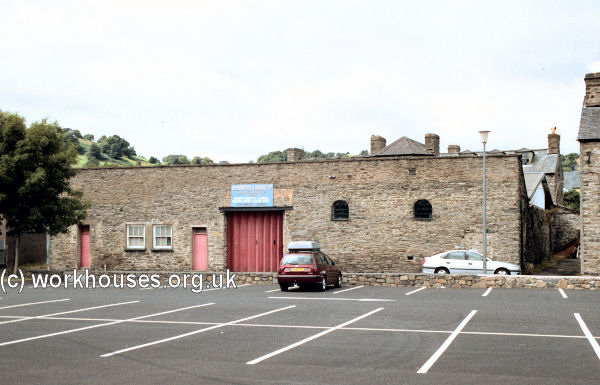
Bala workhouse from the south-east, 2000.
© Peter Higginbotham.
The workhouse proved much too big for the union's needs and in 1869 the building was sold for use as a military barracks. The proceeds wee used to build a smaller and more efficient establishment at a new site on the east side of Mount Lane, although for several years the union was without a workhouse. The new building was designed by Mr W.H. Spaull of Oswestry, and the building contract for £2,250 was placed with Robert Roberts, mason, and Robert Roberts, joiner, of Bala. The contract specified the construction of a workhouse, boardroom and vagrants' wards. The new building was ready for occupation towards the end of 1877.
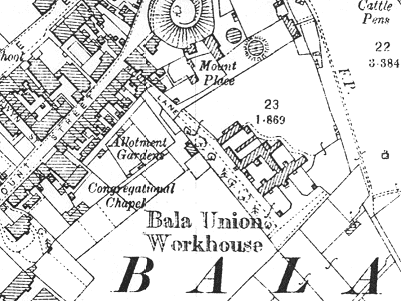
Bala Mount Lane workhouse site, 1899.
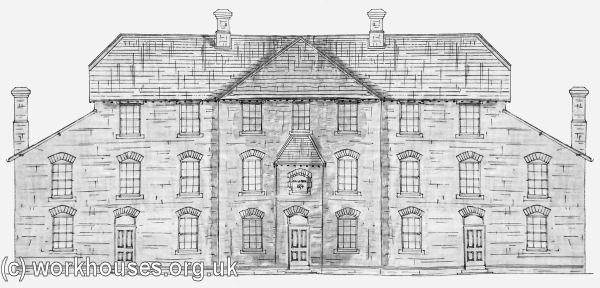
Bala Mount Lane workhouse design from the south-east, 1874.
© Peter Higginbotham.
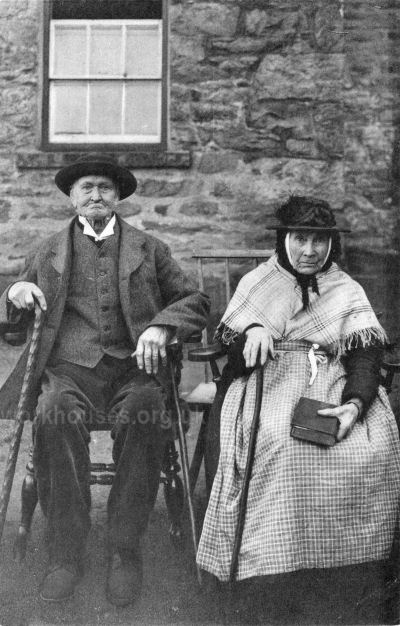
Bala workhouse inmates, 1870sn.
© Peter Higginbotham.
The High Street building was later used as as a factory for bottled mineral water, for biscuits, and for the manufacture and sale of clothing. The main buidling is now used as a guest house.
The Mount Lane building has now been demolished although some of the stonework has been re-used in the construction of the medical centre that now stands on the site.
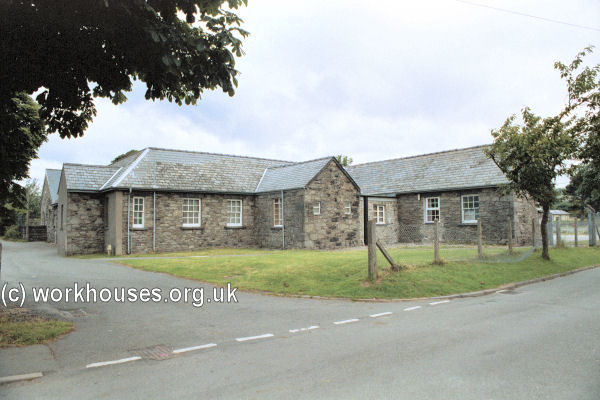
Bala 1877 workhouse site from the south, 2000.
© Peter Higginbotham.
Staff
Inmates
Records
Note: many repositories impose a closure period of up to 100 years for records identifying individuals. Before travelling a long distance, always check that the records you want to consult will be available.
- Meirionnydd Archives, Ffordd y Bala, Dolgellau LL40 2YF. Holdings include: Guardians' minute books (1837-1930); Ledgers (1837-1917); Deaths register (1946); etc.
Bibliography
- Higginbotham, Peter The Workhouse Encyclopedia (2014, The History Press)
- NEW! Workhouses of Wales and the Welsh Borders. The story of the workhouse across the whole of Wales and the border counties of Cheshire, Gloucestershire, Herefordshire and Shropshire. More...
Links
- None.
Unless otherwise indicated, this page () is copyright Peter Higginbotham. Contents may not be reproduced without permission.


